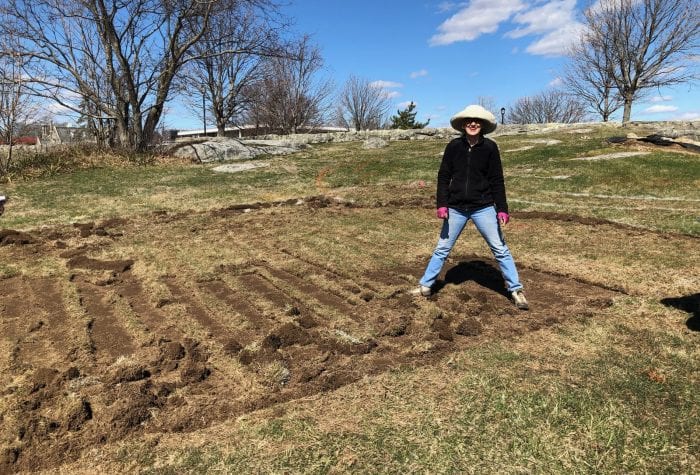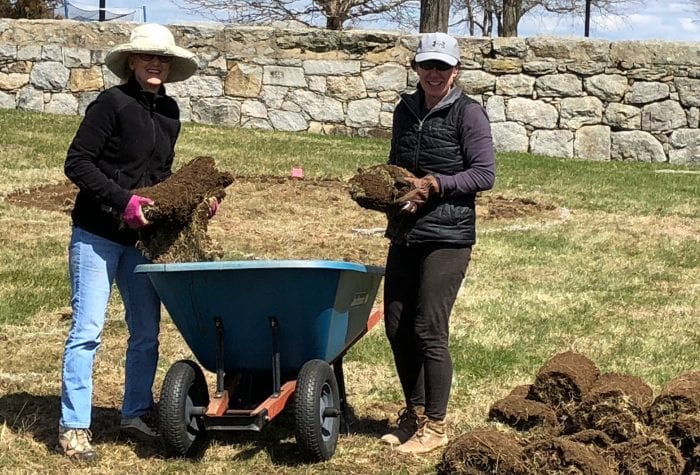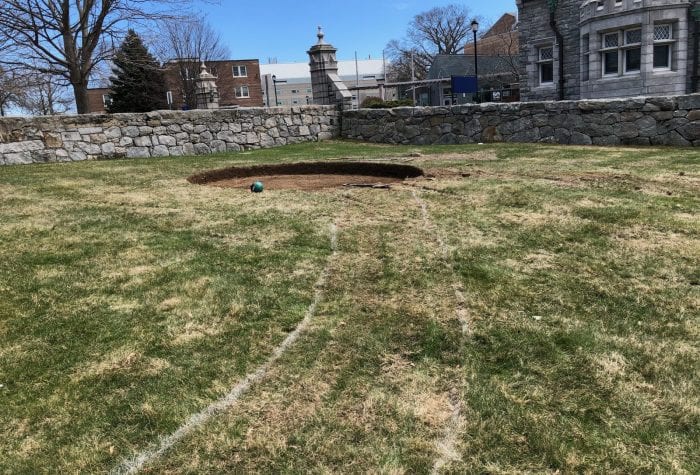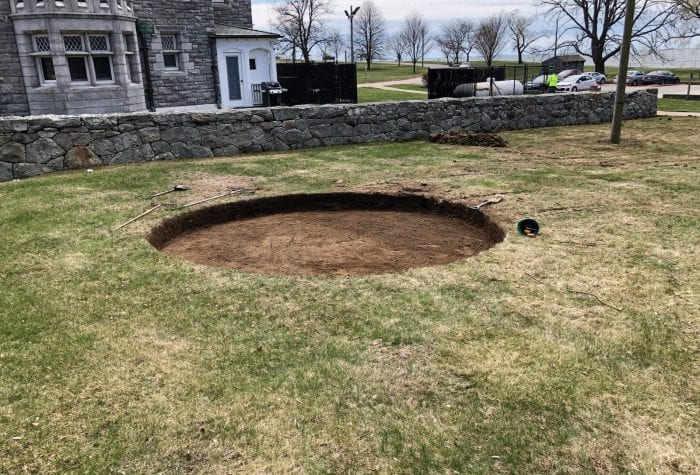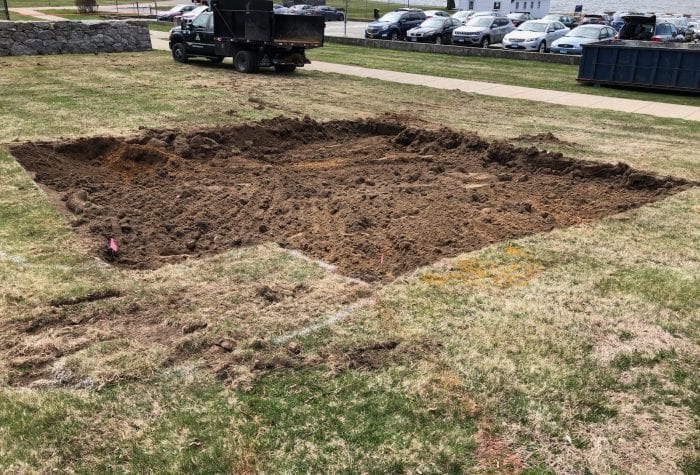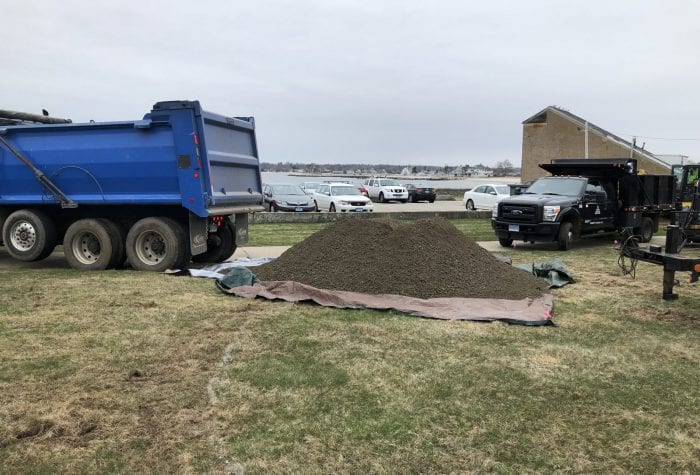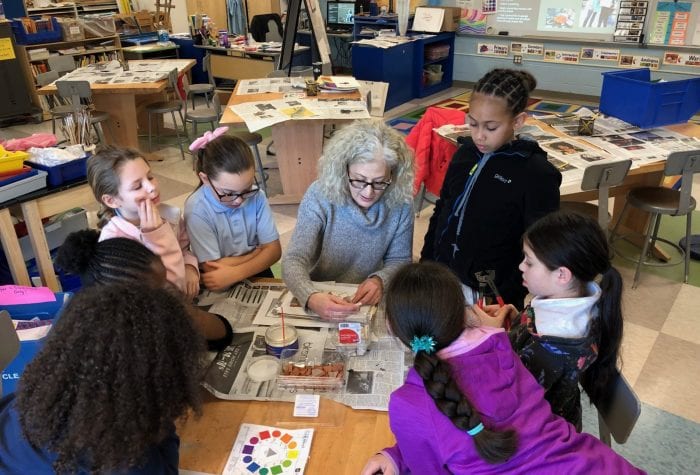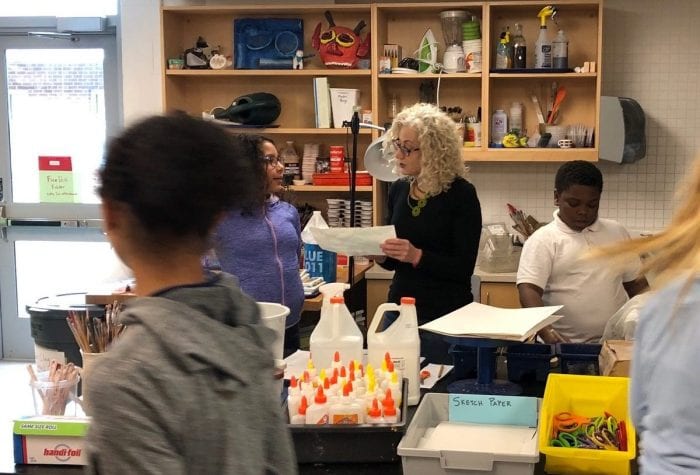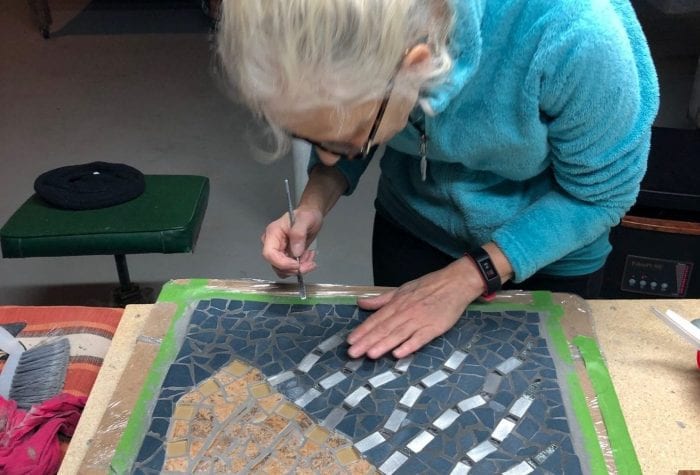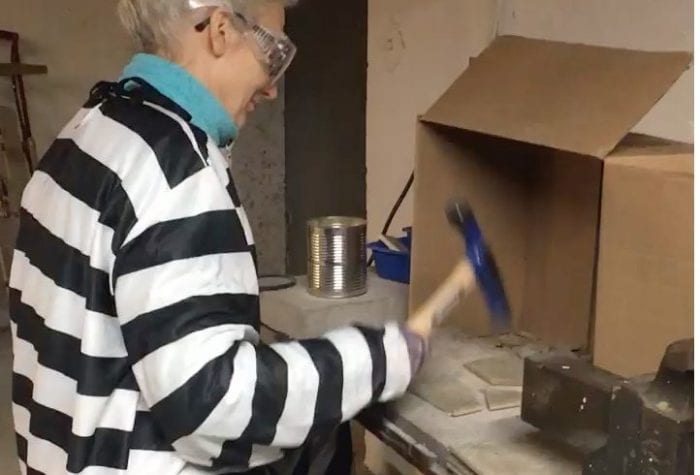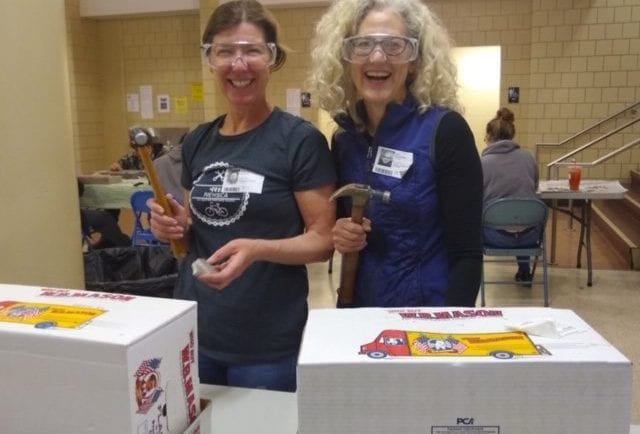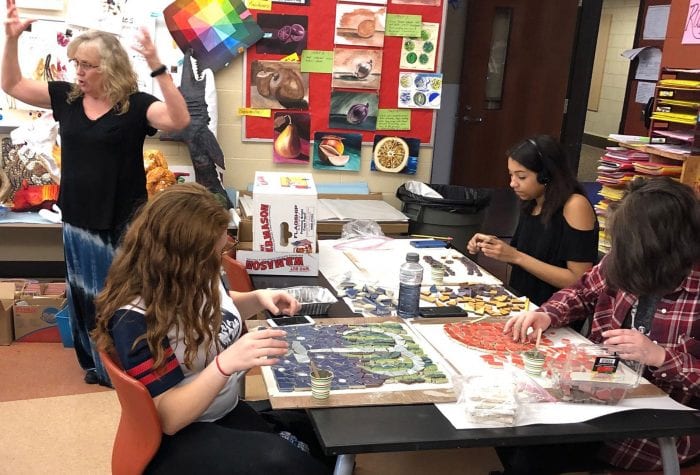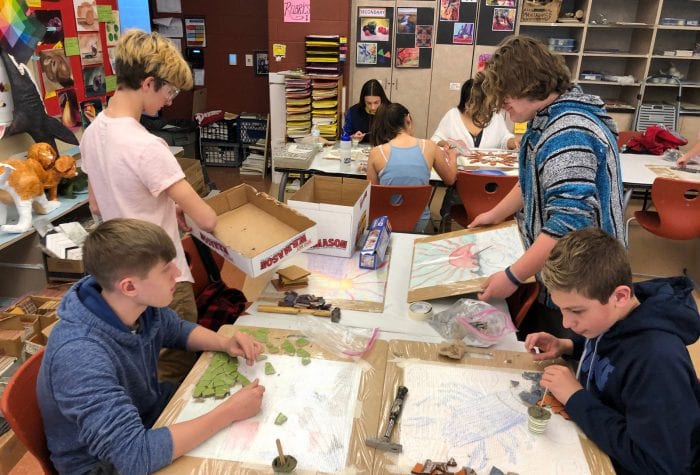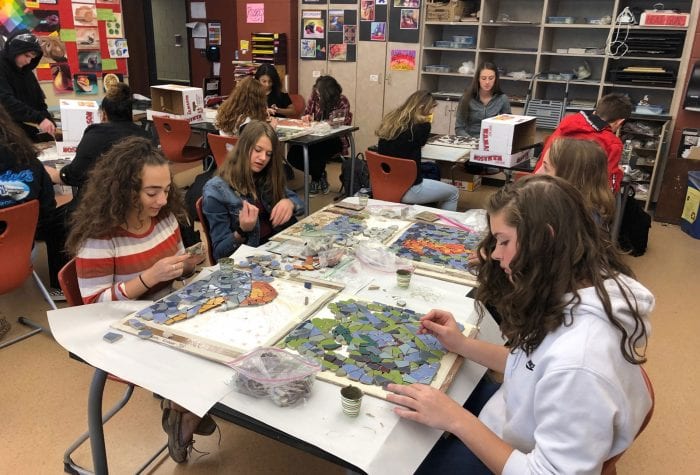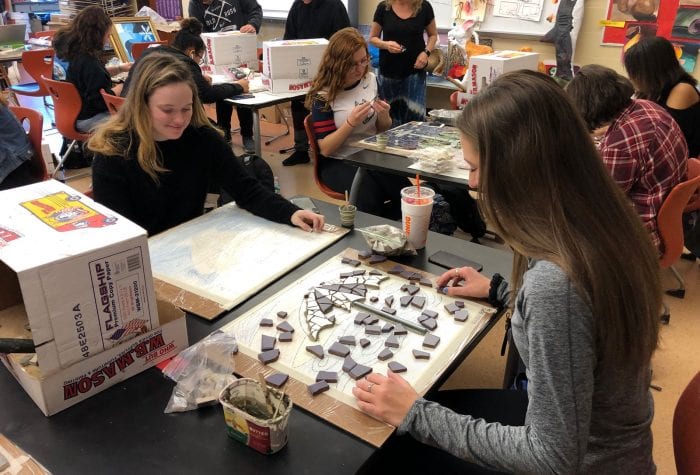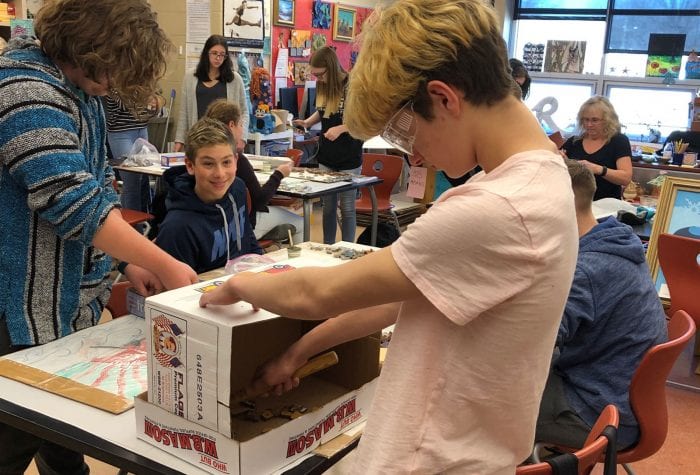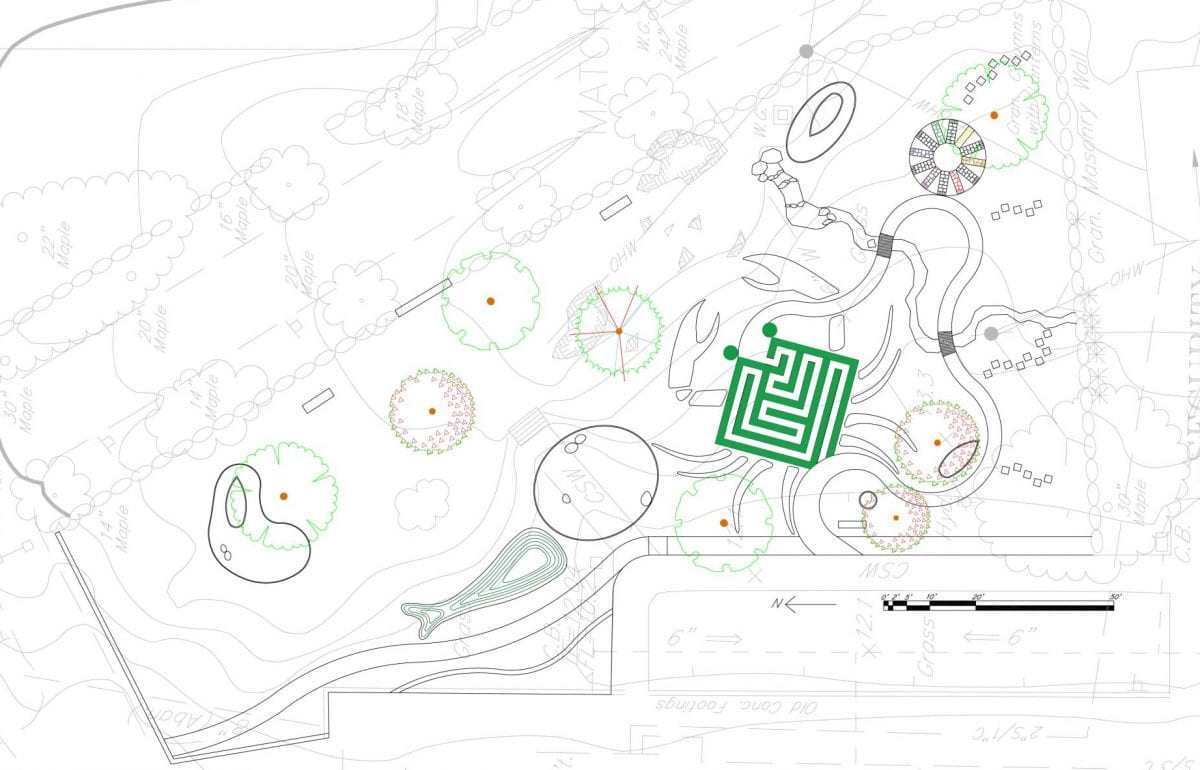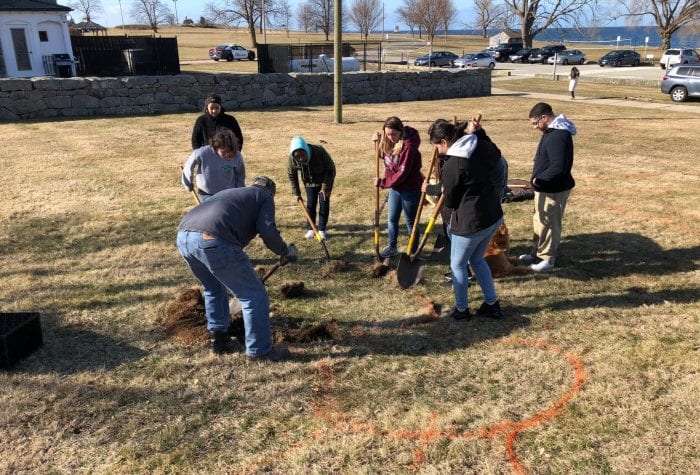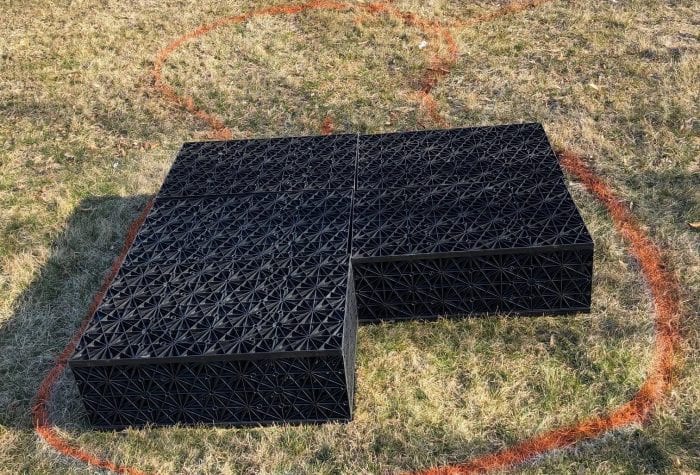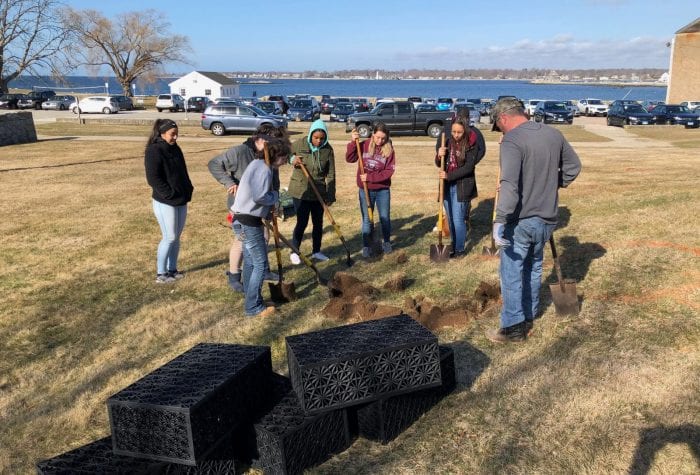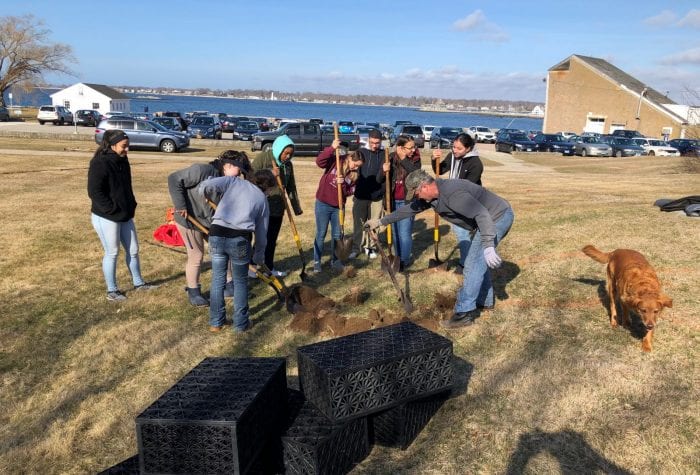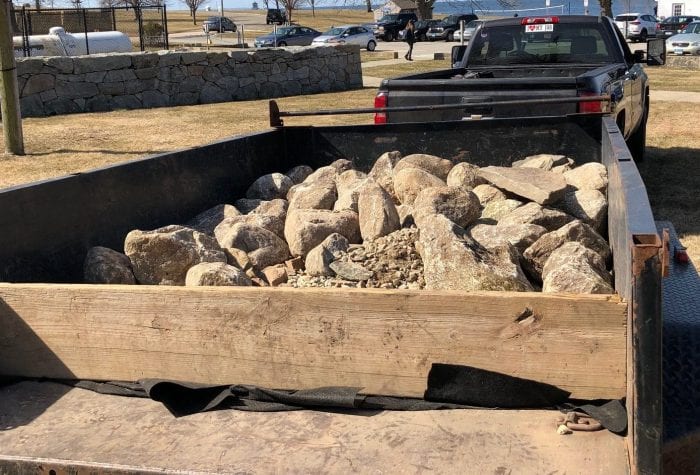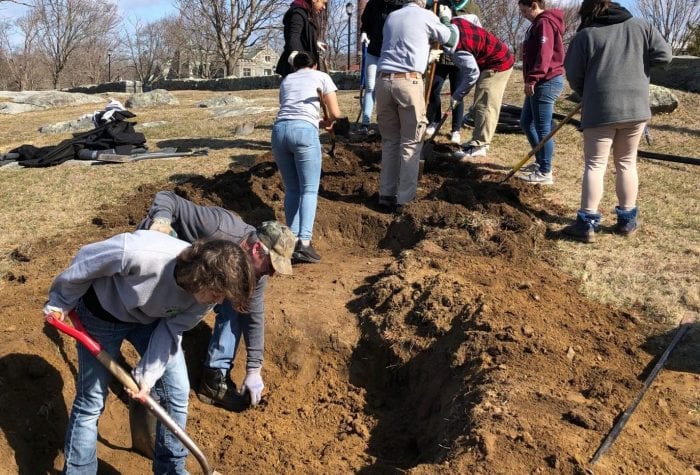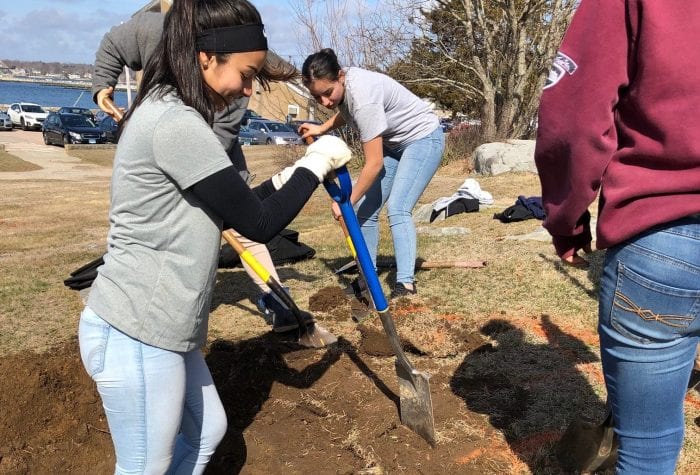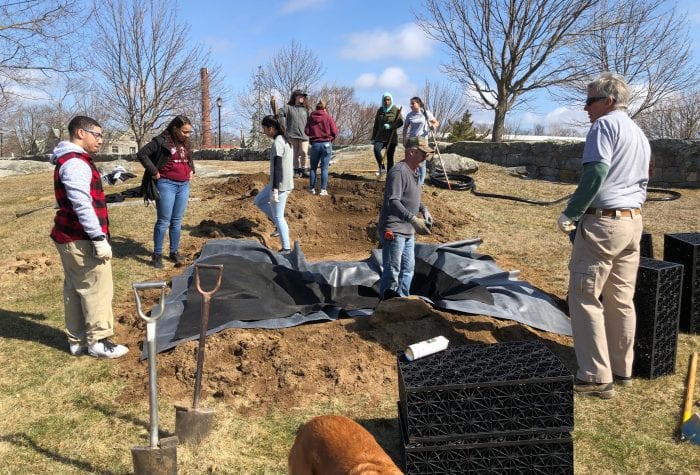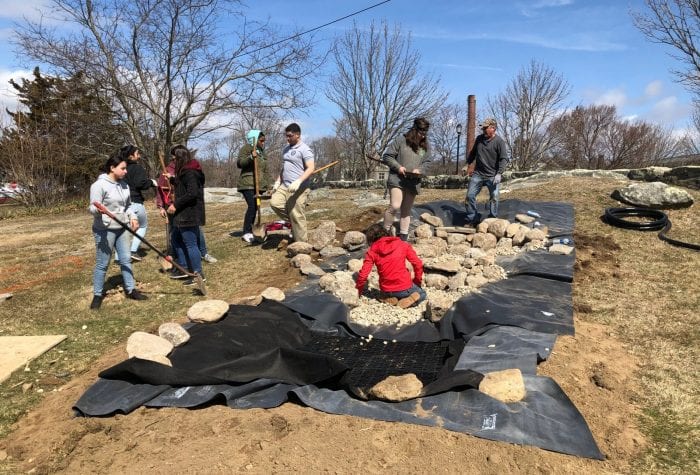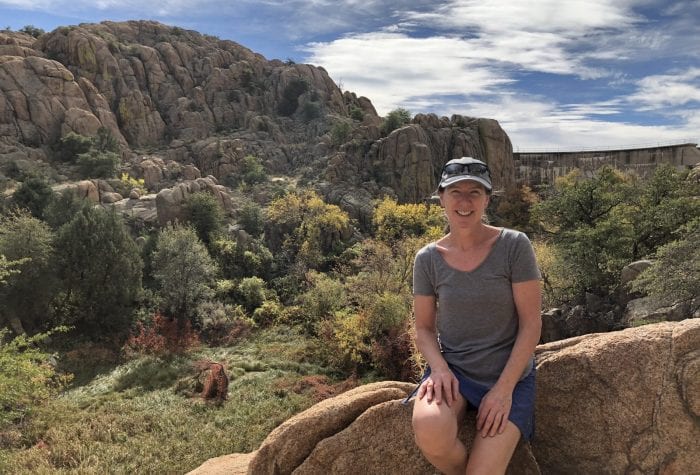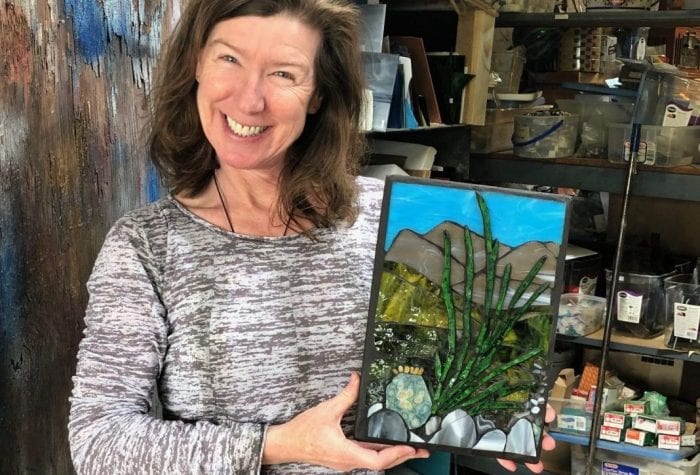This past week, the garden’s installation began in earnest with sod cutting on Tuesday, materials delivery and excavation on Thursday and Friday, and a work party with the Boy Scouts on Saturday! I want to go in order so I don’t miss talking about any of people who have helped this week. I just can’t believe how blessed I am to be part of such an amazing community of people who are willing to give so much of their time and energy. I’m also super proud of our Boy Scouts, their leaders, and their parents who have clearly instilled in these kids a desire to give.
Asking people for help isn’t always easy. It’s easier if the help is for someone or something other than oneself, but it’s still humbling. My $4000 IDEA grant has parameters too, i.e. I can pay a maximum of $500 per vendor and, in the world of landscaping, that doesn’t go very far. Creating each of the elements of the garden takes a lot of inputs, and inputs typically equal money.
For example, both the labyrinth and amphitheater need a six-inch base of aggregate (15 tons), a one-inch base of polymetric sand (3 tons), several pallets of permeable pavers (including the inputs and labor for the mosaic art which will top them), topsoil to fill in the planting beds between the paths, hundreds of herbs, and mulch. Add to that sand for the sandpit (12 tons), stone dust for the pathways (5 tons), hundreds of plants for the pollinator garden and meadow, the waterfall with its own inputs (the kit, aggregate, boulders, etc.) and we’ve got a very expensive garden!
I starting planning for the plants this winter. Due to cost, the initial plan was to buy plugs and have Grasso Tech students grow the tiny plants in their greenhouse. When I spoke to my mentor Petie Reed from Perennial Harmony, she informed me that nurseries would not send plugs in the middle of the winter (because they’ll freeze during transport) and that I had to buy them locally. Petie suggested that I contact Matt Griswold, the owner of Judge’s Farm, a wholesale nursery in Old Lyme.
I contacted Matt, told him about the garden, and was ecstatic when he offered to donate enough plants (in one-gallon pots no less) to fill the entire garden! His donation of over 200 plants and 11 flats of herbs meant that we wouldn’t have tiny little pint or quart-size plants for this spring’s installation—we would have substantial plants!
Matt is my hero as are so many amazing people in the community who are donating both materials and so much labor! I had already contacted Pride’s Corner prior to talking with Matt and they too had immediately donated $500 worth of plants which should cover all of the tall grasses which will enclose the garden. (The labor of growing plants in nurseries is something folks don’t often see. It is a heck of a lot of work to grow plants from seed and pot them up as they grow, taking care of all their individual needs. Next time you buy a plant, realize that there are many hours that went into tending it!)
As for the materials, John Lombardi of Lombardi Sand and Gravel, is another of my new heroes. Once again I had to hold my heart (think Sanford & Son) because, without hesitation, after hearing about the garden, he donated over 30 tons—(yes, tons!) of materials for the garden—every ounce of aggregate, sand, stone dust, topsoil, and mulch. I am just floored, again and again, by the generosity of our community. This garden, like I said in an earlier post, is truly being built by many hands in the garden itself and off-site by these amazing businesses.
And speaking of those who have toiled in the garden, both Burnett’s Landscaping of Salem CT who did the sod cutting, and Butler Company of Windsor CT who did the excavating, came riding in on white horses and made the garden’s installation possible in weeks rather than months. Both companies squeezed us in among a myriad of other jobs, doing more than I could have even hoped. Both companies have stellar reputations because they do exceptional work but they also embody the spirit of community and giving. I am profoundly thankful for their contribution to the garden.
Thank you to everyone for being part of this garden and stay tuned for the post on the Boy Scout work party.

